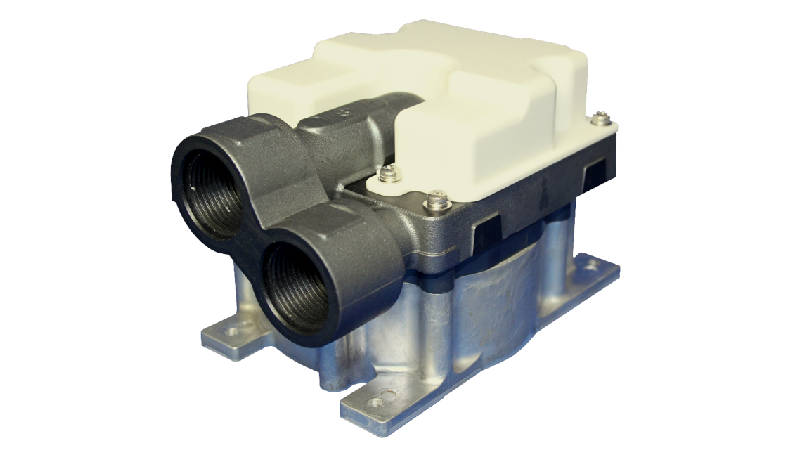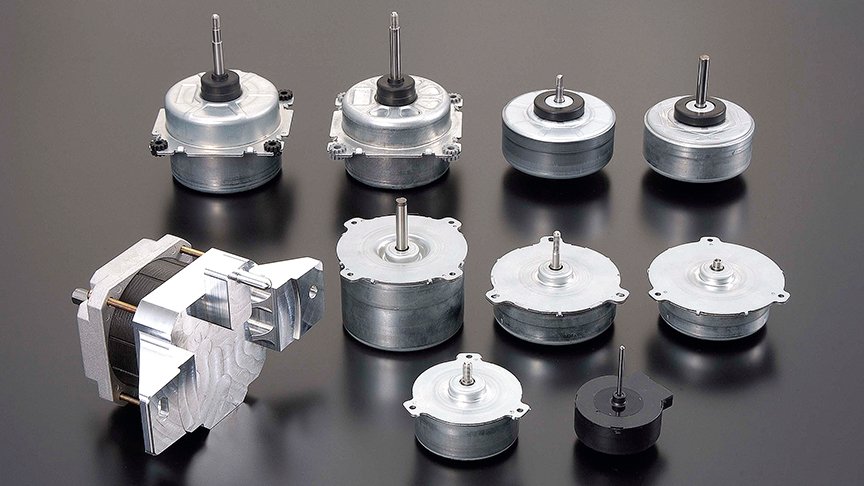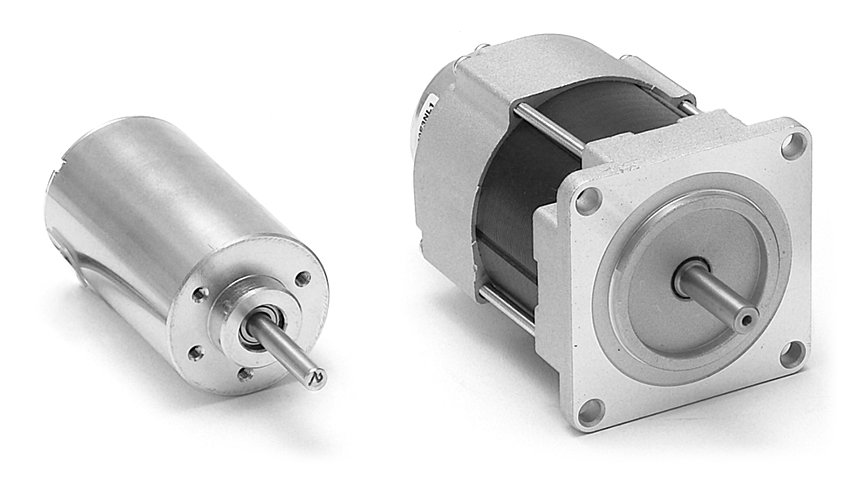Unprecedented structural design makes low profile and high performance - centrifugal canned motor pump
-
Life environment
-
Water-cooling system
-
Liquid delivery
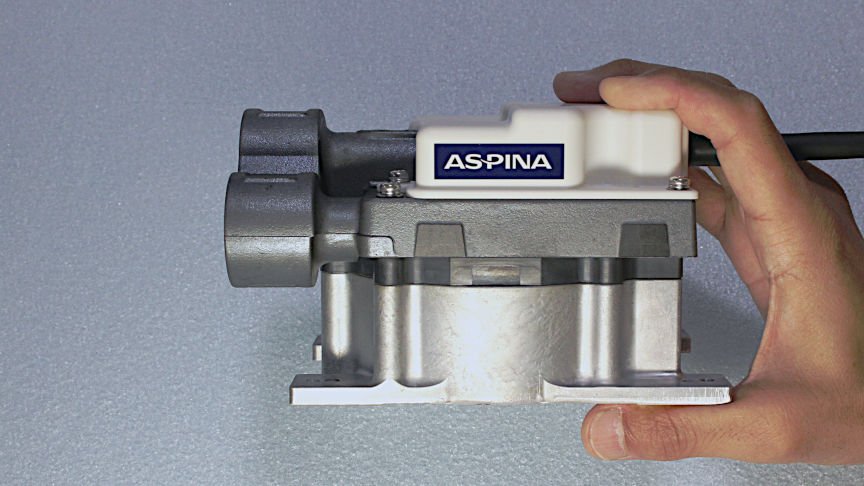
The expanding digital world requires smaller liquid cooling pumps
"Let’s develop the world's lowest-profile pump."
Mr. Sato, General Manager of ASPINA LE Business Unit initiated a project for a new pump development.
The goal of this project was, as Sato proclaimed, simple and challenging.
There was a strong need for a pump to be both low in height and more efficient, especially in a cooling unit for servers. Miyasaka, an expert and engineer for pump development, and other engineers in the LE Business Unit development and design team thought that centrifugal canned pumps could meet those needs and started the development.
In recent years, with the development of cloud services, the digitization of not only documents and photos, but also audio and video, etc., has further progressed, and servers that store and process data are rapidly increasing in capacity and speed. More powerful CPUs, GPUs, and other processors are required for faster data processing, and servers are consuming more and more electric power as these processors become more powerful. As the servers generate more heat along with such increasing power consumption, the air-cooled system is becoming insufficient to cool the servers, and the need for liquid-cooled high-performance servers is increasing. Even with liquid cooling, injecting a large amount of refrigerant was necessary to cool a server strongly, but there was not enough space in the highly integrated server rack, and it was difficult to install a large pump to send a large amount of refrigerant.
ASPINA designed a new pump to fit in such a limited space, having a low-profile motor with a split iron core and a unique substrate structure. The pump is as low as 94 mm in height, while it delivers a maximum output of 45 L/min and a maximum pump head of 24 m. It is half the size of pumps that were available in the market, yet has the same output, allowing sufficient refrigerant to be circulated in the server.
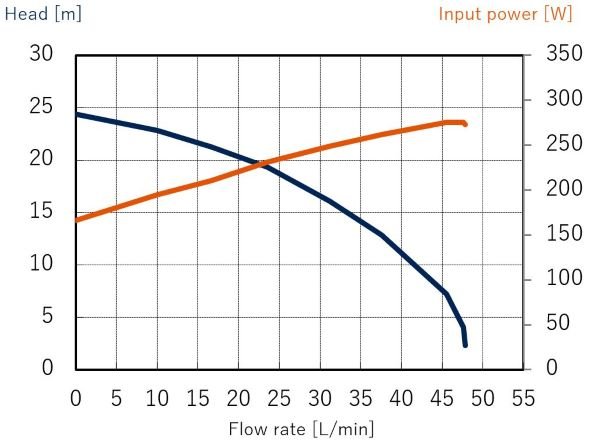 Q-H characteristic diagram (Duty 100%) of the low-profile and high-performance centrifugal canned pump
Q-H characteristic diagram (Duty 100%) of the low-profile and high-performance centrifugal canned pump
This contradictory problem of sending more refrigerant while reducing the size of the pump was solved with a new concept and the technological capability of realizing the concept.
How ASPINA reduced the pump size with sufficient flow rate and heat dissipation
In theory, even if the motor is small, the torque will increase when a large amount of power is applied. However, heat loss could reduce the efficiency and burn the circuit. The project team were trying to solve it by applying a conventional structure but they realized that this approach would not be able to shrink the size of the pump. When the development was going to come to a deadlock, Miyasaka noticed that many similar products on the market had circuit boards placed at the bottom of the motor and this would prevent heat escape. He and the team started the structural design over and came up with the idea that placing the board on top of the motor could make it easy to dissipate heat.
In addition, they noticed that the refrigerant supplied by a pump could cool the substrate placed on the motor. This method provides higher cooling efficiency compared to the air-cooling method of using heat sinks in conventional pumps.
This new arrangement and structure solved the thermal problem and maintained sufficient flow rate of refrigerant when the size of the pump got reduced.
The center of the development for the low-profile pump was our technological capability of precisely arranging all the parts and components inside the small pump.
In addition, the team used a low-profile motor with a split iron core that can reduce energy loss, thus increasing operating efficiency and suppressing heat generation.
While developing the best substrate layout and the low-profile motor, they were looking for the best pump blade structure. Using CAE technology for fluid analysis, they developed a new blade based on a highly interlocking closed impeller. These unique approaches and many trials have resulted in the pump that is half the size of existing products but has the same output.

The power of ASPINA development team to make results happen
ASPINA actively introduces new technologies and know-how from outside in order to immediately develop and provide customers with the best products.
In the development of this pump, we visited exhibitions of manufacturers, met research institutes such as universities at its early stage and received guidance from consultants in specialized fields in order to acquire necessary knowledge and accomplish structural experiments and verification.
Mass production of the pump involved a few issues that had to be solved, including wiring and assembly. In order to solve these problems accurately and quickly, we visited many companies, even small factories, to seek partners with expertise.
The introduction of external technologies usually requires the ability to understand them and to apply them to the company's development and production systems. We have enhanced our ability to do so over the years.
ASPINA’s low-profile and high-efficiency technologies broadening applications of the pump
We have been listening to the needs of our customers and continuing our research to further improve the performance of our pumps. ASPINA's new pump has great potential and could be applied to other applications.
The use of this low-profile pump gives customers a lot of flexibility in designing their products and allows them to develop better products.
"No other pump of this size can produce this much output." The person in charge at a server development company told us. ASPINA always provides our customers with new ideas, technologies and products beyond their expectation.

performance centrifugal canned pump
Link to product page:
Exhibition information
-
5 Feb. 2025
-
21 Oct. 2024
-
15 Oct. 2024








